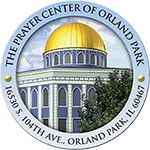It is essential, before we explore and derive the vision and the worldview of Quran, to understand its overall structure. There are four levels at which Quran can be understood in time and space:
- The Verse or “Ayah”:
Quran is a collection of verses. Each verse is a unit of meaning where all the words in that verse come organically together to confer a message or messages. The words within a verse must be understood in the context of the full verse. The unit of meaning is the minimal amount of revelation. The Prophet would receive one or multiple units of meaning in response to a certain question or challenging problem or issue. We’ll refer to the verse or “ayah” in Quran as: Unit of Meaning, Minor.
- The Chapter or “Surah”:
Quran is divided into 114 chapters or surahs. Each chapter is made up of verses that range in size from three verses, as the shortest, to 285 verses, as the longest. The word surah is etymologically related to soor in Arabic which means a fence or a fortress made up of building blocks. Similarly, each surah is a separate construct made up of multiple units of meaning. If the ayah is a unit of meaning minor, the surah is the Unit of Meaning, Major, i.e., the maximum part of Quran received by the prophet at one time during its course of revelation.
- The Mother of the Book:
Before discussing Quran in its totality as a corpus, it is imperative to talk about the mother of the book or “Um al-kitab”. It is “The Book” or the divine writ that includes all the revelation received by all the Prophets: The tablets of Abraham, the Torah of Moses, the Psalms of David, the Gospel of Jesus, and finally, the Quran of Mohammad. The movement of the revelation through time speaks for its dynamicity that reflects the response of the revelation to the challenges that humanity faced and is facing with the change of time, place, people, and social circumstances. Each historical period has its lifespan and hence requires its own book that is compatible with its needs. God, in His eternal and absolute knowledge and wisdom, and being the Author of “The Book,” eliminates and maintains the messages as the revelation evolved over time until it was completed and perfected in its final form- Quran (13:38-39). Abrogation (Naskh) that was mentioned in Surah Al-Baqara (2:106) took place during that process of evolution within Um Al-Kitab, and not inside Quran itself. Quran admits that it preaches messages that are similar to those that appeared in previous divine books. Nevertheless, the evolution of the revelation with new messages must continue in order to reach its objective without obstruction or human intervention.
- Quran:
Quran must be viewed as the final revelation that culminated the evolutionary process that took place within Um Al-Kitab. Quran has two major functions, to endorse (Tasdiq) what was revealed to humanity before it, and to bring the revelation into an overarching (Haymana) horizon and higher level of thinking and understanding (5:48). Its era extends from the time it was revealed to Mohammad ﷺ till the end of life. No further abrogation is needed since the structure of Quran has this inherent capacity to generate for humanity multitudes of answers and solutions to questions asked at graduated levels of thinking and understanding. If we divide the language of Quran into “signifiers” and “signified”, the number of its words as “signifiers” is finite, but the number of its words as “signified” is unlimited. This is how Quran describes itself in two places: (18:109) and (31:27).
In this way, the name “Quran” which is etymologically derived from the Arabic word that means to render a reading, implies, as its linguistic structure suggests, the possibility of multiple readings or reading and rereading it and to improve continuously the quality of reading it. Although Quran shares with the Books revealed prior multiple adjectives and qualifiers such as Light, Guidance, and Criterion among others, the name Quran was only given to the last Book that has the capacity to remain the ultimate reference of meaning and direction to humanity till the end of life.
In summary, the concepts and the messages of Quran must be derived from reading each verse or group of verses as a full unit or units of meaning within the construct of the Surah(s), and in turn within the context of Quran in its totality as the culmination of the evolution of revelation within Um Al-Kitab and the final revelation, in its perfect and complete form, that lends itself to multiple readings and meanings.
By Dr. Walid Khayr




